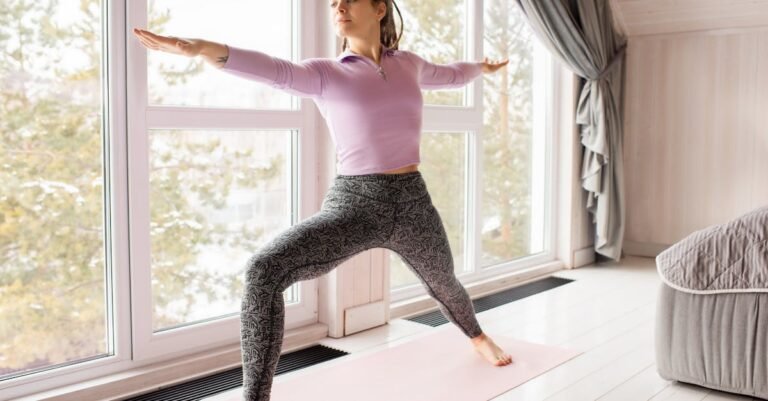Ever feel like you want to work out at home, but staring at your living room floor leaves you feeling kinda… lost? Like, where do you even start? Maybe you’ve tried setting up a routine before, but life got in the way, or you just weren’t sure if you were doing the right things. You know moving your body is good for you, but figuring out the how and when feels like another chore on an already long list. Sound familiar? Well, you’re in the right place! This article is your friendly guide to finally building a simple, doable weekly home workout calendar that actually fits into your real life. We’ll walk through how to create a plan that makes sense for *you*, helps you feel stronger and more energized, and ditches that “what should I do today?” headache for good.
Figure Out Your “Why” and Your Goals
Okay, first things first. Why do you even want to work out? Seriously, take a sec and think about it. Is it because you want to chase your kids (or your dog!) around without getting winded? Maybe you want to carry all the grocery bags in one trip like a superhero? Or perhaps you just want to feel a bit better in your own skin and have more energy. Your “why” is like your secret sauce – it’s what keeps you going when you’d rather hit snooze or binge-watch another episode. Once you know your why, set some *real* goals. Forget “losing 20 pounds by next Tuesday.” Think smaller, achievable steps. Maybe it’s “I want to be able to do 5 push-ups without stopping” or “I want to walk for 20 minutes three times this week.” Write ’em down! Imagine someone like Alex, who just wants to stop feeling stiff after sitting all day. His goal? Do 10 minutes of stretching every morning. Totally doable, right?
Take Stock of Your Time and Space
Let’s be real about your schedule. When do you *actually* have time? Maybe it’s 20 minutes before everyone else wakes up, a quick burst during your lunch break, or winding down in the evening. It doesn’t have to be an hour! Even 15-20 minutes consistently is way better than aiming for an hour and never doing it. Find those pockets of time. Now, look around. You don’t need a fancy home gym. That space between your couch and the TV? Perfect. A corner in your bedroom? Awesome. You just need enough room to move without knocking over a lamp. And equipment? Your body is amazing equipment all by itself! Things like squats, lunges, and planks need zero gear. If you happen to have resistance bands or some light weights, great! But don’t let a lack of equipment stop you. Just know what you realistically have to work with – both time and space.
Choose Your Workout Flavors (Types of Exercise)
Think of exercise like food – you need a balanced diet! Sticking to just one thing gets boring and might miss important stuff. So, let’s mix it up. You’ve got a few main “flavors”:
- Cardio: This gets your heart pumping and makes you breathe a bit harder. Think dancing around your kitchen, jumping jacks, jogging in place while watching TV, or even running up and down your stairs (carefully!).
- Strength: This builds muscle, which helps with everything from lifting things to boosting your metabolism. Think push-ups (on your knees or against a wall totally counts!), squats (like sitting in a chair), lunges, or holding a plank (like a stiff board). If you have weights or bands, you can use those too.
- Flexibility & Mobility: This is about moving easily and comfortably. Think stretching, some basic yoga poses, or just gently moving your joints through their range of motion. It feels good!
You don’t need to master everything overnight. Maybe start by picking two or three flavors to focus on each week. Variety keeps things interesting!
Building Your Weekly Skeleton
Alright, time to put pencil to paper (or fingers to keyboard!). Grab a calendar or planner. Look at the time slots you found in Chapter 2. Now, literally block them out: “Workout Time.” Keep it simple to start. Maybe aim for three workout days per week. That gives you rest days in between, which are super important (more on that later!). Now, plug in those workout flavors you picked. It could look something like this – just an idea!
- Monday: Strength (30 mins)
- Tuesday: Rest or gentle walk
- Wednesday: Cardio (20 mins)
- Thursday: Rest
- Friday: Flexibility/Light stuff (15 mins)
- Saturday: Active fun (maybe a bike ride or playing outside)
- Sunday: Rest
See? It’s just a starting point, a basic structure you can build on.
Flesh It Out – Picking Specific Exercises
Okay, you’ve got “Strength” written down for Monday. But what *exactly* does that mean? Now’s the time to fill in the blanks. Don’t overcomplicate it! For that Monday Strength session, maybe you decide to do:
- Bodyweight Squats: 3 sets of 10 repetitions
- Push-ups (knees or toes): 3 sets of as many as you can do well
- Walking Lunges: 3 sets of 8 repetitions per leg
- Plank: Hold for 30 seconds, 3 times
For Wednesday’s Cardio, maybe it’s:
- 5 minutes of light marching/arm circles to warm up
- 15 minutes alternating: 1 minute jumping jacks, 1 minute rest/march, 1 minute high knees, 1 minute rest/march (repeat!)
- 5 minutes of gentle stretching to cool down
Where do you find these exercises? YouTube is packed with free tutorials (search for “beginner bodyweight exercises”), and there are tons of great fitness apps and websites out there. Some platforms even offer guided workouts specifically designed for home, which can take the guesswork out completely. Find a few reliable sources you like and trust.
Don’t Forget Rest and Flexibility (The Real Kind!)
This might be the most important part: rest is NOT lazy! It’s when your muscles actually repair and get stronger. Skipping rest days thinking you’ll get results faster can actually backfire and lead to burnout or injury. So, embrace those rest days! Sometimes “active recovery” is nice – like a gentle walk or some light stretching – but pure rest is golden too. The other kind of flexibility? Being flexible with your schedule! Life happens. Sometimes you oversleep, a meeting runs late, or you’re just not feeling it. It’s OKAY. Don’t beat yourself up. If you miss Monday’s workout, just pick back up on Wednesday, or maybe swap days if your week allows. The goal isn’t perfection, it’s showing up *most* of the time. Think of it like this: Imagine you planned a workout, but your kid gets sick. Okay, plan paused. Tend to your kid, and jump back into the schedule when things calm down. No biggie.
So, there you have it! Creating a home workout calendar isn’t about some crazy, complicated plan. It’s about understanding *why* you want to move, being realistic about your time and space, choosing activities you might actually enjoy (or at least tolerate!), and setting up a simple schedule. We covered figuring out your motivation and goals, checking your resources, picking different types of exercise, building that basic weekly skeleton, choosing specific moves, and remembering that rest and being flexible with yourself are key. The absolute best plan is the one that feels doable *for you* and that you can stick with consistently. Start small, don’t aim for perfection, and celebrate the small wins. Having that calendar takes away the daily “ugh, what now?” feeling and makes it so much easier to just get started. You’ve got this!










